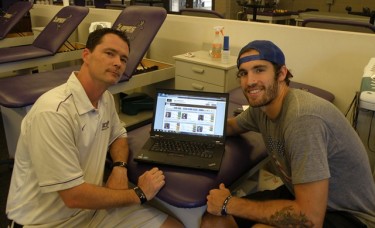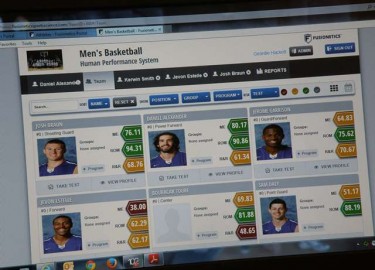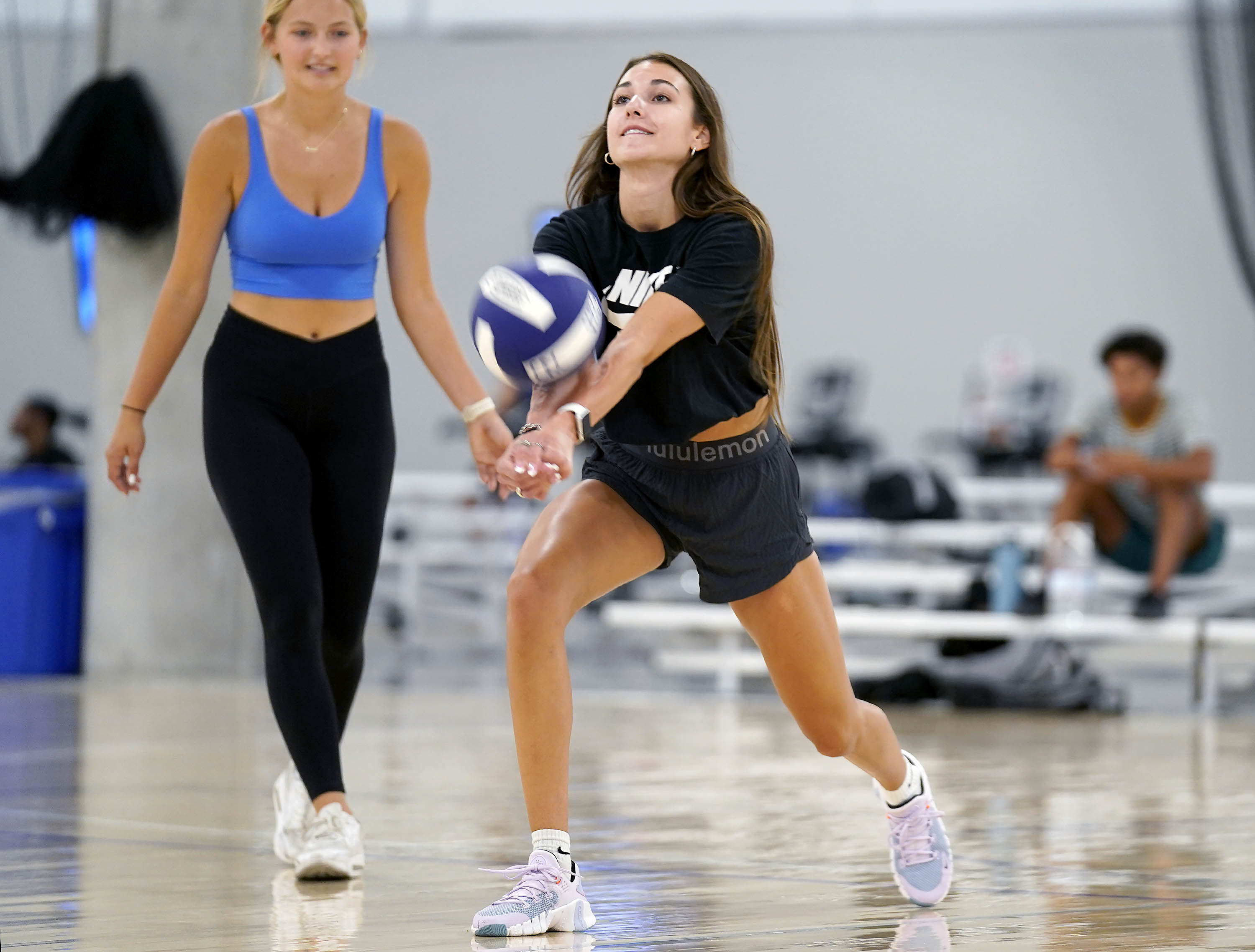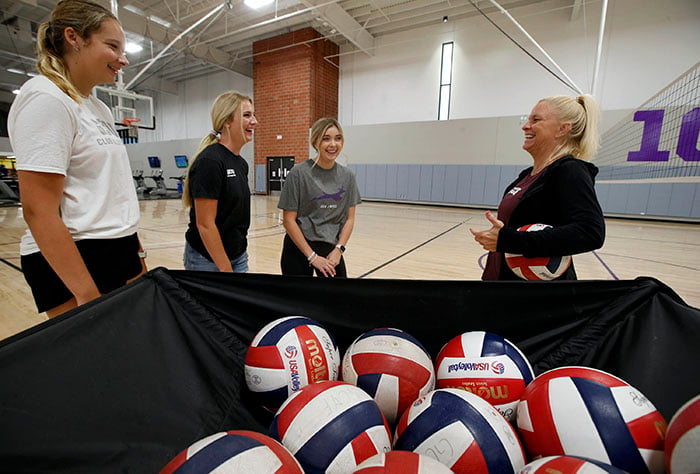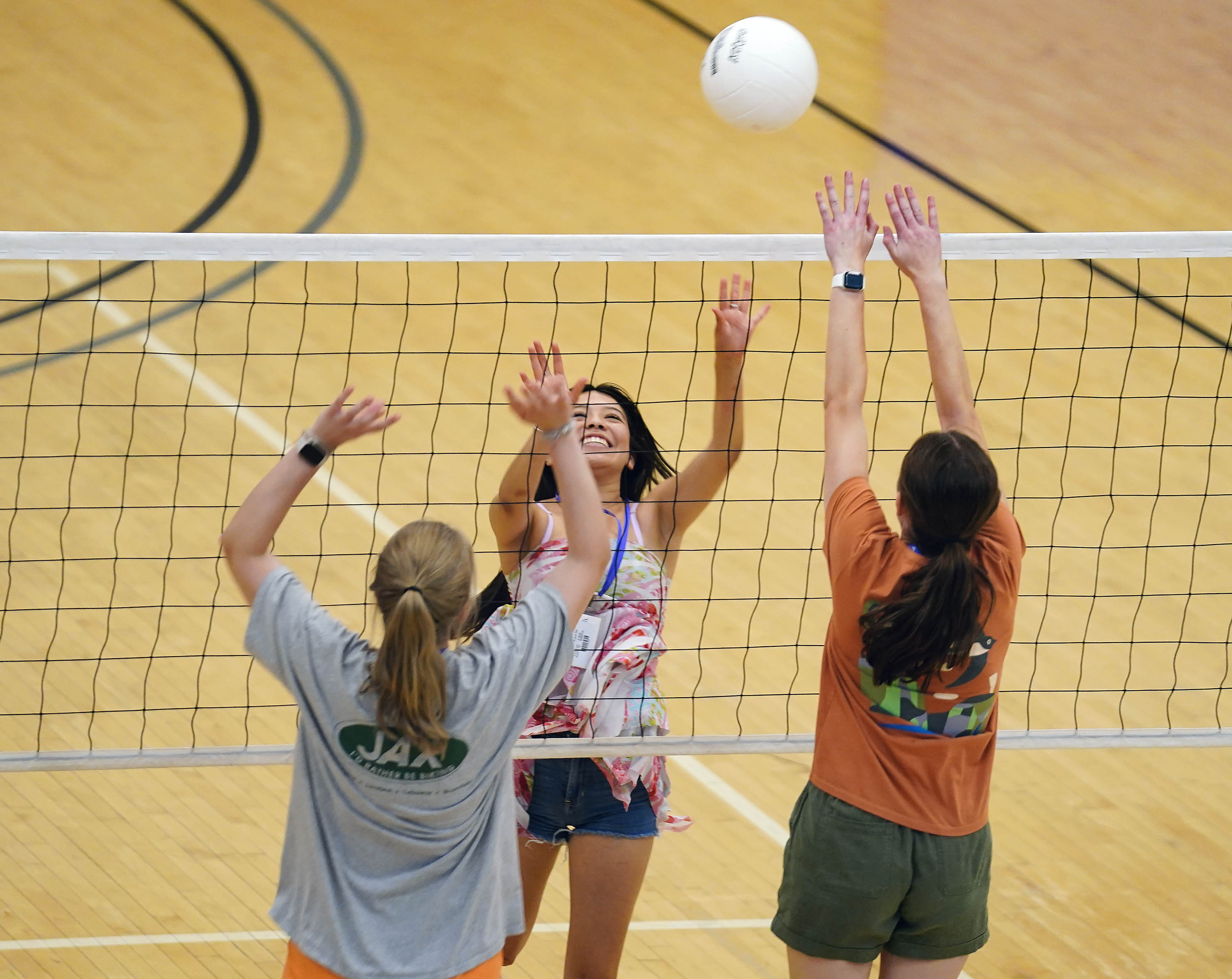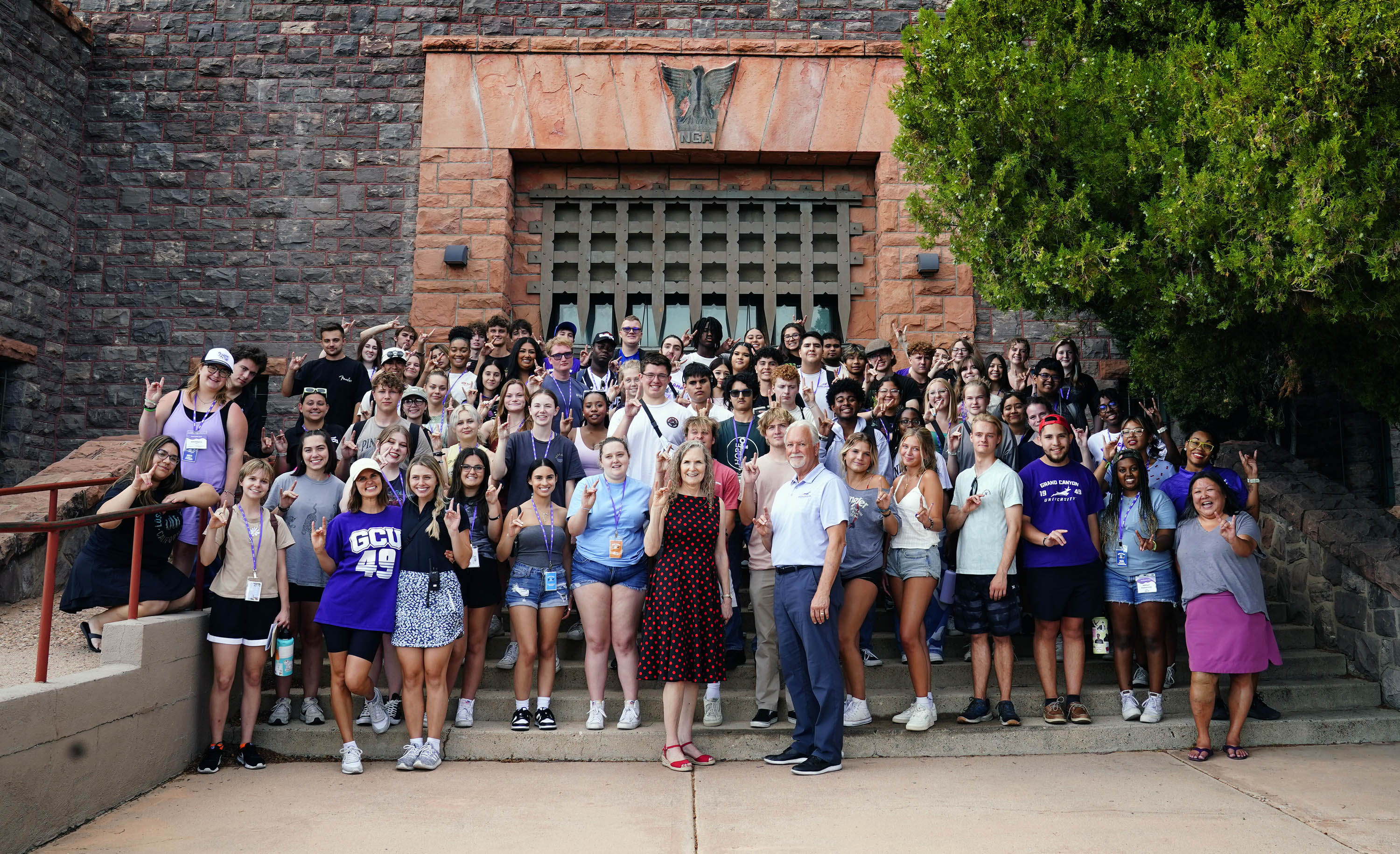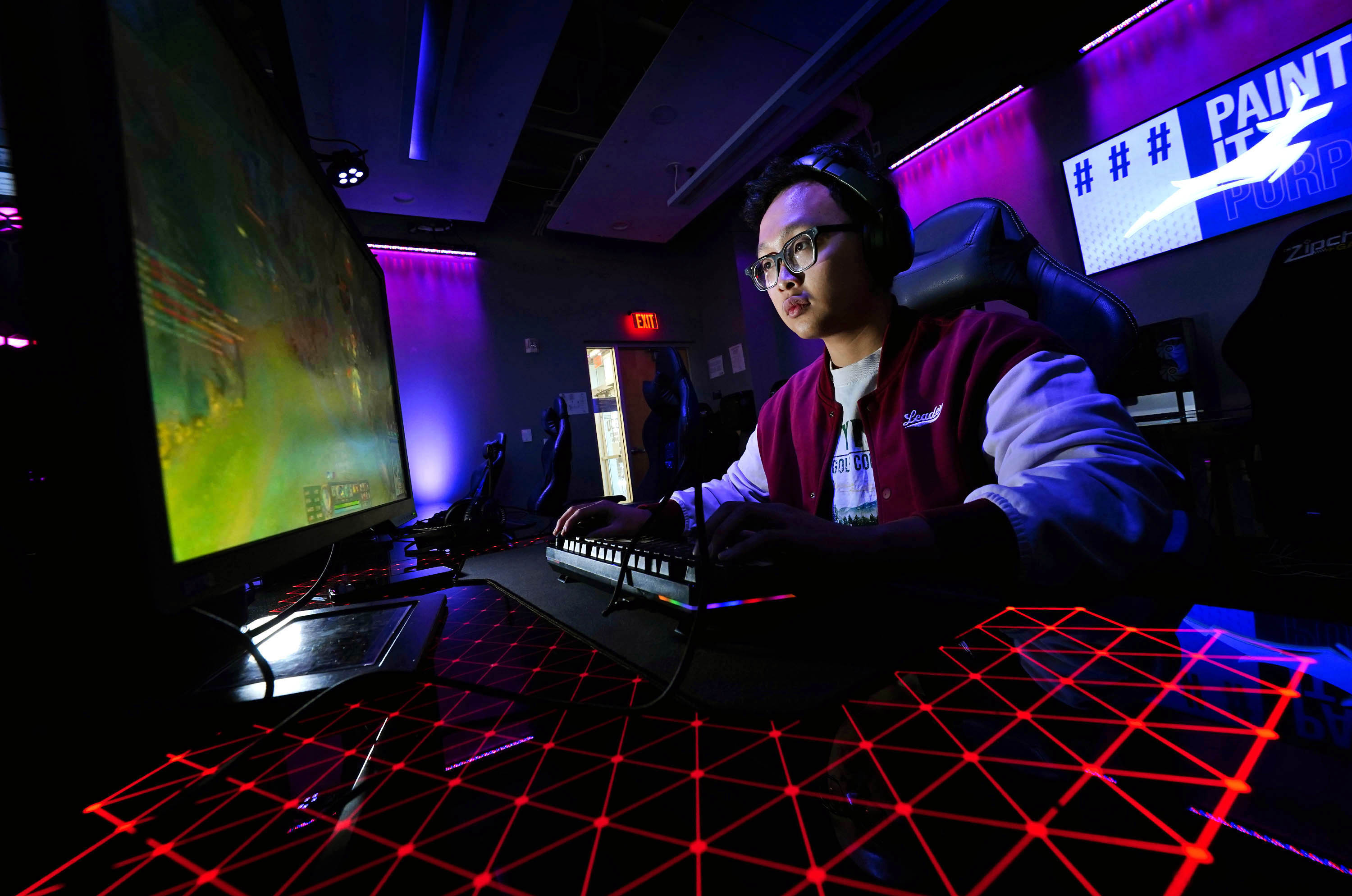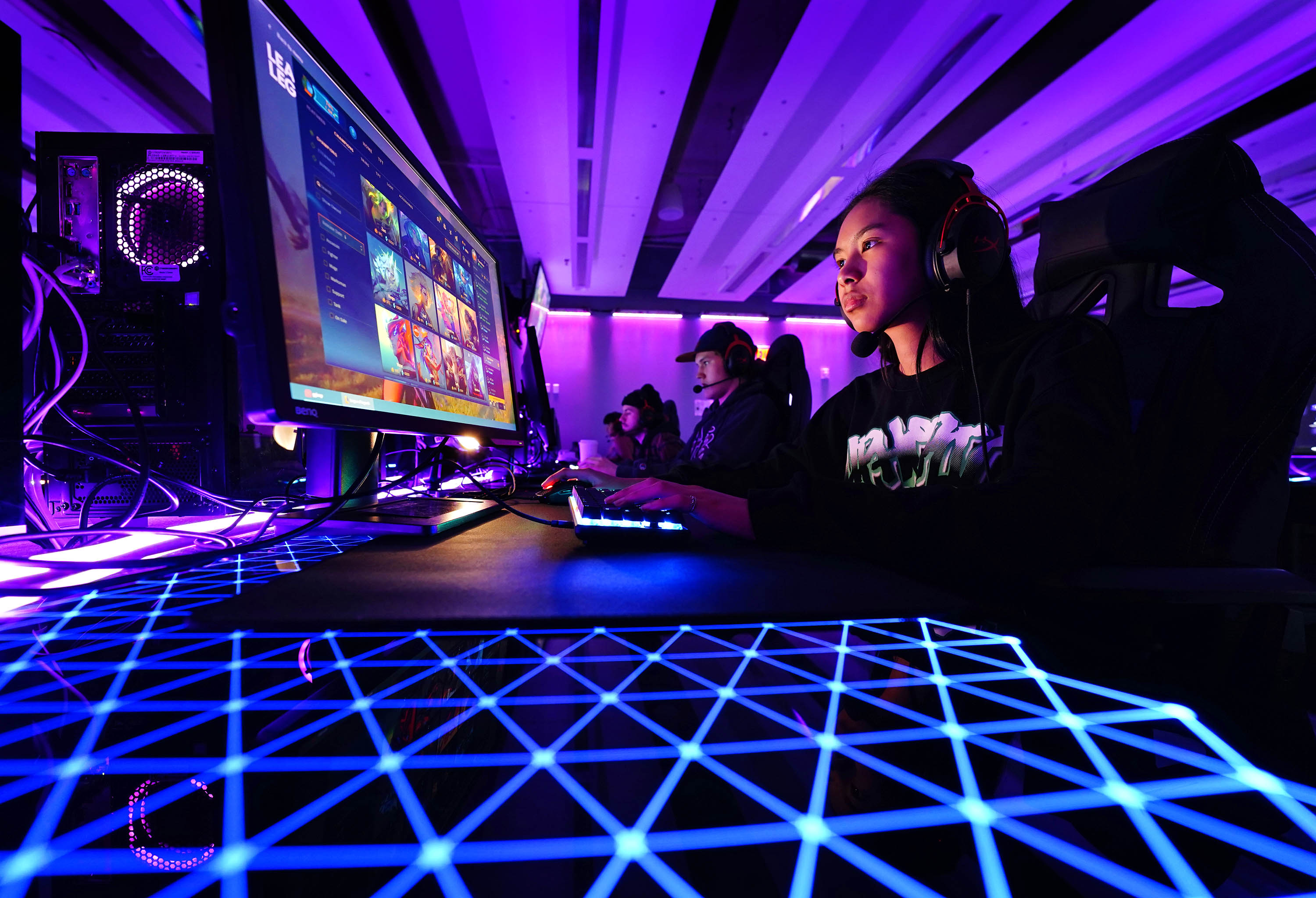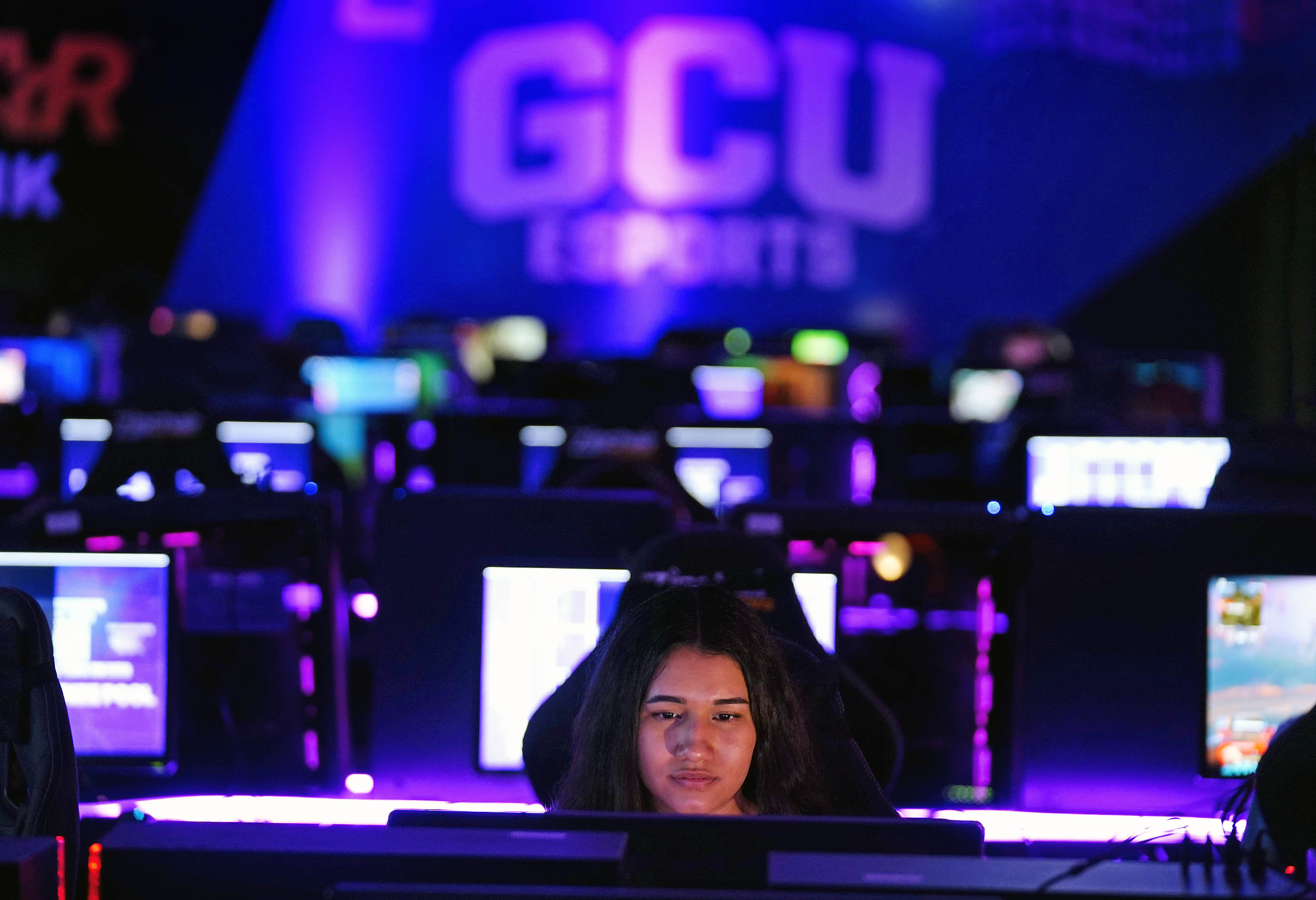By Doug Carroll
GCU News Bureau
Geordie Hackett had Daniel Alexander right where he wanted him: in the training room, assessing various aspects of the 6-foot-8 basketball player’s mobility and flexibility and then entering his observations into a laptop.
After about 20 minutes, Alexander had the head athletic trainer’s evaluation right where he wanted it: either on a printout or delivered to his cell phone, along with prescriptive exercises designed to help him address his physical imbalances and stay on top of his game.
This is the brave new world of Fusionetics, a high-tech system conceived by Dr. Micheal Clark to help athletes reduce injuries, optimize performance, enhance recovery and extend their careers. When Grand Canyon University recently purchased the system, it joined the Phoenix Suns and Iowa State University as clients on the cutting edge of innovation in athletic training.
“Coach (Dan) Majerle says that in four years he wants us to be a Top 20 basketball school in the country,” Hackett says of the head coach for the Antelope men’s team.
“Right now, in terms of our sports medicine clinic, we’re already there. We’re ready for the big time.”
Hackett became acquainted with Clark, a longtime physical therapist for the Suns, when the NBA team conducted an abbreviated training camp at GCU in late 2011. Clark’s work at the time with Steve Nash received credit for keeping the point guard in game-ready shape despite the limitations caused by a chronic back injury.
The timing for Fusionetics, with its emphasis on preventative care, probably couldn’t be better at GCU. Hackett says physician referrals for Antelope athletes doubled in 2013-14 over the previous year. A typical ACL knee injury — surgery, aftercare and rehab — runs about $33,000, he says.
“If we save just one surgical knee injury with this,” Hackett says, “we save the school tens of thousands of dollars.”
Here’s how Fusionetics works. Its Human Performance System creates a custom online profile for an athlete in three areas: movement efficiency, range of motion, and recovery and readiness. The first two categories involve static movements by the athlete and measurements by the trainer. The third category is assessed through a series of questions on diet, sleep, relaxation, hydration, stress level and other factors.
The profile is easily understood even by a layman, using the colors of green (good), yellow (fair) and red (poor) to highlight an athlete’s scores in the three areas. The men’s basketball and women’s volleyball teams already have had their initial assessments taken, and the other GCU teams will follow as they report to campus. Athletes will be evaluated monthly.
The resources available instantly with the system are impressive. For example, athletes who score low in recovery and readiness can receive specific meal-plan suggestions on how to improve their diet. Exercise recommendations are accompanied by video demonstrations, eliminating any guesswork on how they are done correctly.
In his assessment last week, Alexander scored 80.17 in movement efficiency (No. 1 on the team), 90.86 in range of motion (No. 3) and 61.34 in recovery and readiness (among the team's best). The first two scores received a green, the third a yellow.
Although he is described by Hackett as “naturally healthy,” his knees and right hip are areas to keep an eye on.
“The knowledge from this can help me see where I stand physically and the things I can implement to be a better athlete,” Alexander says. “I don’t know what ‘healthier’ looks like sometimes, and this gives me a visualization.
“Every day is humbling in the game of basketball, and I need every edge I can get physically, mentally and spiritually.”
Beyond the obvious feedback provided to GCU athletes, Hackett sees several other benefits from Fusionetics:
- It can assist in the recruiting process, analyzing the susceptibility to injury of would-be Antelopes.
- It can help develop a new breed of data-driven athletic trainers and strength and conditioning coaches at GCU.
- It has research possibilities because of the sheer numbers it will collect.
“We’ll be able to see trends from sport to sport,” says Hackett, who has been with GCU since 2005. “We’ll get a whole lot of information with this.”
Hackett envisions intrasquad competition for the best scores.
“This can be a challenge (for the athletes),” he says. “They’ll see someone who’s better, and their competitive instincts will come into play.”
Clark says the system was built with the ever-expanding role of technology in mind.
“I’ve been working in sports medicine and professional sports for over 20 years,” he says. “In the last five years, there has been an explosion of information and technology in the fields of human movement, human performance and recovery science. It is almost impossible to keep up with the speed.
“We decided … to build a robust athlete performance system that is flexible to change with the speed of innovation. It can easily be modified as we learn more.”
For additional information about Fusionetics, go to www.fusionetics.com.
Contact Doug Carroll at 602.639.8011 or doug.carroll@gcu.edu.

